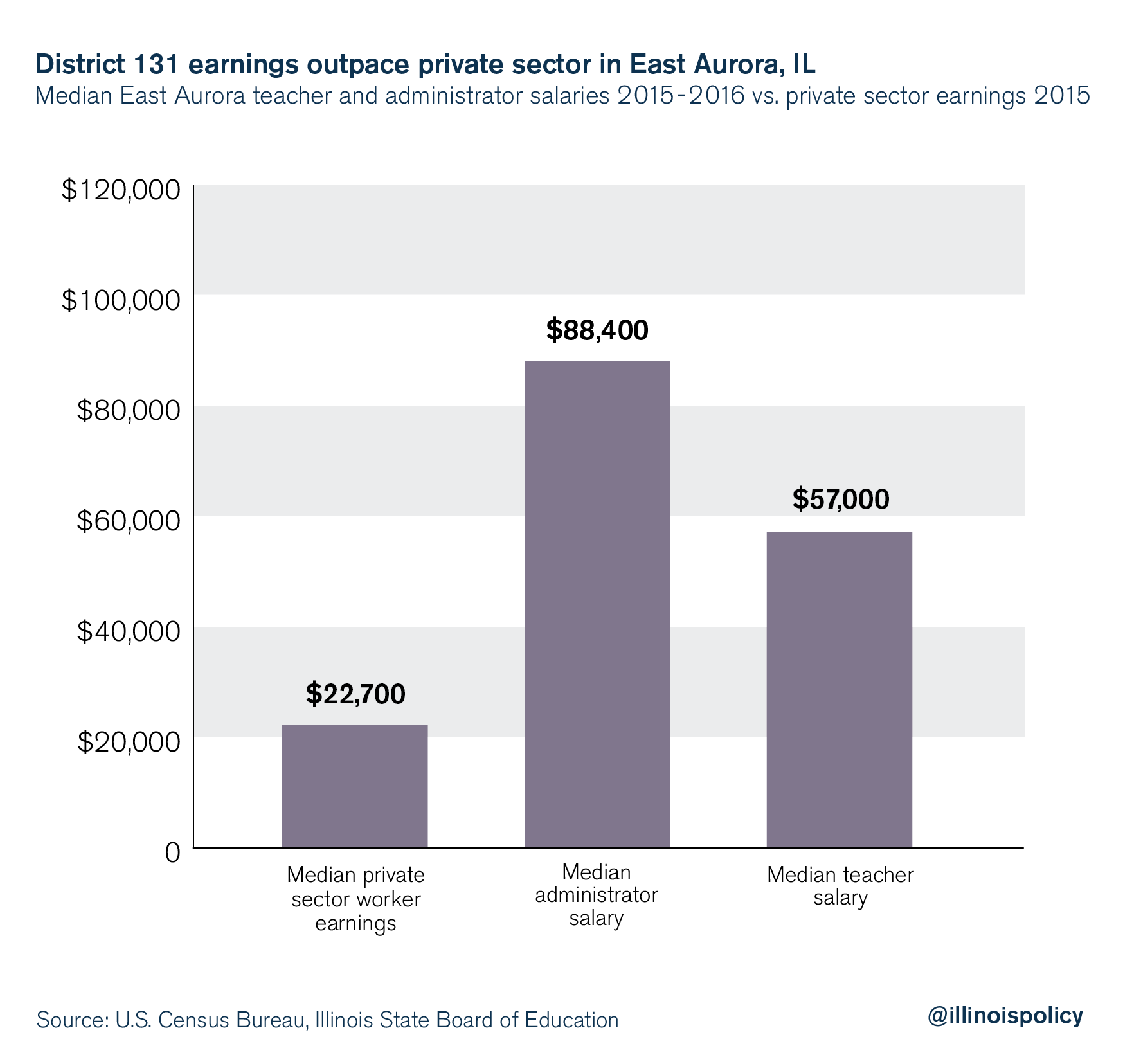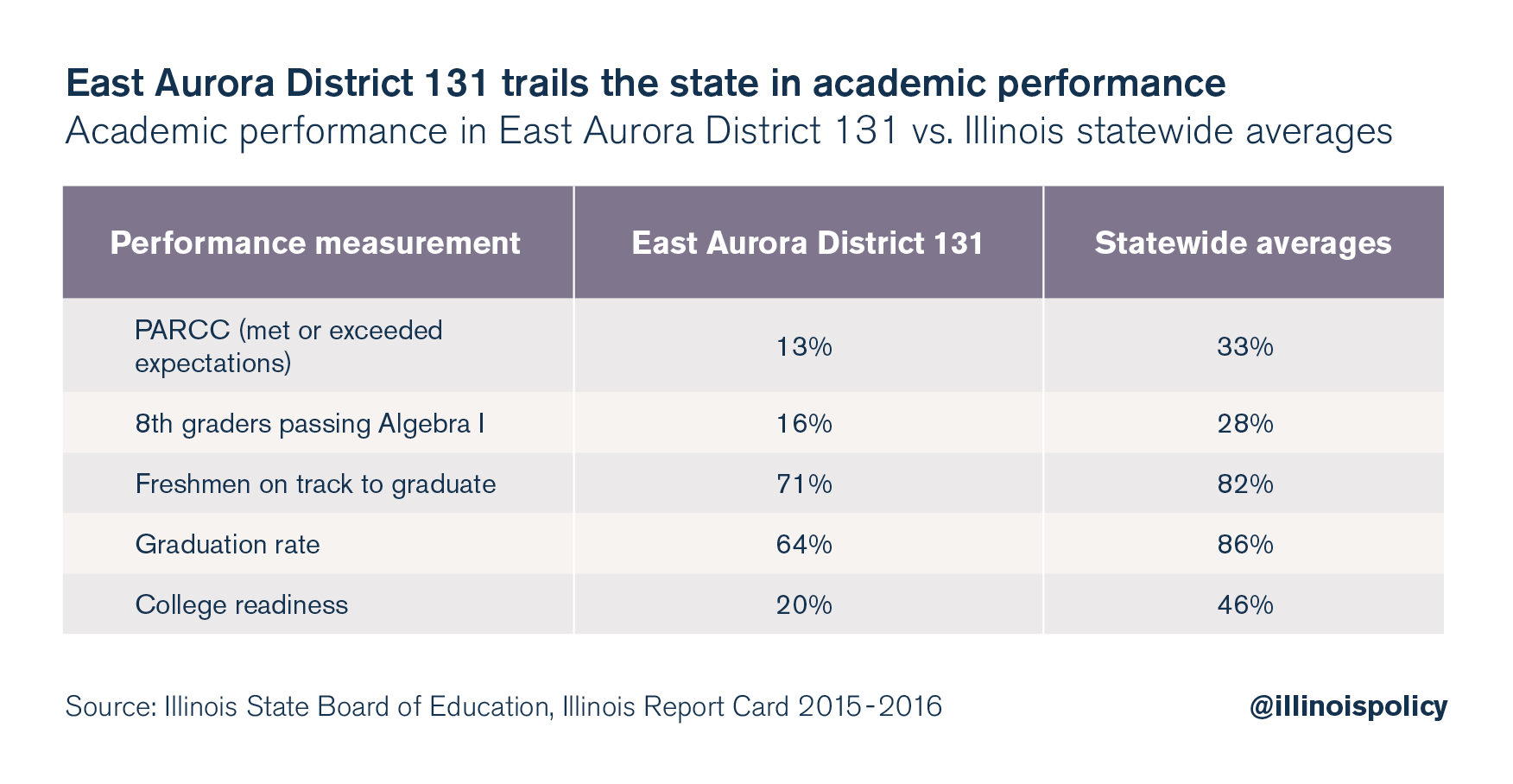School buses finally arrive for East Aurora students, but unfairness remains
Thousands of East Aurora students will be able to take buses to school for the first time, but the community still stands as an example of how school district decisions don’t always prioritize students.
Most students in East Aurora’s School District 131 never had bus transportation to school. That was the case even for students living miles away from their classrooms.
But in what has been termed a “milestone” by some residents, the school district began regular daily bus service for students for the first time at the start of this school year. The service will affect thousands of students. And school board officials hope increased busing will help raise attendance, test scores and the graduation rate – all goals for the academically underperforming district.
But ultimately, East Aurora still stands as an example of how school district decisions don’t always prioritize students – and how Illinois’ union laws can stand in the way of adequately and efficiently educating the state’s children.
Hurdles to a milestone
Despite its popularity, a union contract almost derailed the transportation plan. That’s because day-to-day logistics – such as when the school day starts and when students can arrive at school – must be agreed to by the teachers union. And union officials indicated that could mean an additional year of planning before they would agree to the busing proposal, if at all.
While the school district was able to make bus transportation available to students by the time school started on Aug. 28, it was no thanks to the union.
According to an employee in the district’s transportation department, rather than adjusting school start times and providing transportation in a more efficient manner by doing multiple bus runs with the same buses, the school district is utilizing more buses. And that, of course, drives up cost.
That cost, in turn, is ultimately passed on to residents in the form of higher property taxes. That’s not something the residents of East Aurora should have to worry about. While district families and students struggle to get by – most are low-income and the district drastically underperforms academically – a union contract still stands in the way of an efficient busing plan for the district’s students.
And that’s not the only unfair aspect of the contract.
District priorities out of line with what students need, and what residents can afford
Almost two-thirds of students in the East Aurora school district are considered low-income. According to the U.S. Census Bureau, median earnings for private sector workers in the area were under $22,700 in 2015.
Meanwhile, district administrator and teacher salaries vastly outpace those of private sector workers in the area. In 2016, the median salary for district administrators was $88,400. The median teacher salary was $57,000.

When other benefits are added, median teacher compensation grows to $68,000, and median administrator compensation equals $112,700.
And then there are pensions.
Current annual pensions for administrators average about $80,000 a year, with an estimated total payout of $2.5 million to $3 million over the course of retirement, according to data obtained from the Illinois Teachers’ Retirement System through a Freedom of Information Act request.
The average total benefit career teachers (30+ years of service) receive over the course of retirement is $2.1 million.
Low-income students shouldn’t have missed out on bus transportation while school district employee compensation ate up school district money.
Significantly, the same contract that allows for relatively high compensation for teachers is the same contract that could have impeded the district’s plan to implement bus transportation for low-income students.
Academic performance in East Aurora tracks below state averages
Academic performance in East Aurora District 131 confirms that the district and teachers union needed to move quickly to help students.
In 2016, only 13 percent of students met or exceeded expectations on the Partnership for Assessment of Readiness for College and Careers, or PARCC, tests, compared with a statewide average of 34 percent. Less than 16 percent of eighth-grade students passed Algebra I, compared with more than 28 percent statewide. Only 20 percent of students in the district were deemed “college ready” as measured by ACT scores, compared with 46 percent statewide.

In short, students in East Aurora fall behind statewide averages on nearly every metric.
Students get lost in the shuffle under Illinois union laws
When it comes to negotiations over teachers’ contracts, it’s the students who lose. The example in East Aurora bears this out.
To make the transportation plan more economically feasible (and, therefore, more taxpayer-friendly), the school district considered staggering start times at the schools. That would mean the same buses could make multiple runs – and the district could pay for fewer buses.
According to the district, staggering start times would lower its additional three-year busing costs by between $343,000 and $441,000. And the school board hopes to offset some more of the cost by increasing attendance through the bus transportation, which would affect the amount of aid paid by the state.
But like many school districts around the state, the District 131 teachers’ collective bargaining contract governs school start and end times. Changing the contract means negotiations between the union and the school district.
When and how students are bused to school should not depend on a teachers union – but that’s how the law works in Illinois.
In effect, teachers unions are given veto power over any district logistics that might affect the contract, thus stripping school districts such as East Aurora of the ability to make timely and cost-effective decisions, and making difficult the quick implementation of a program that would benefit students and their families.
In the meantime, those 3,000 students could have been without bus transportation for yet another year.
When it comes to union contracts in Illinois, students’ needs too often come last.
